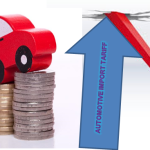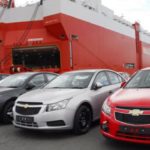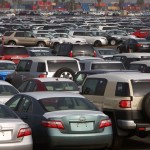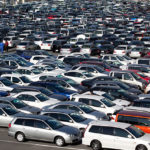
A Boost to Employment: Flying a Ruse!
It was also stated that the new tariff will create employment almost immediately. Two employment generating windows were identified as possible spinoff of the new tariff regime. First, it is claimed that many multinational car manufacturers will, on account of the new tariff regime, be induced or practically fall over themselves to set up car manufacturing/assembly plant in-country to maximise the budding opportunities for growth. Second it is also envisaged that the potential for backward integration will create an array of businesses that will add value to the employment climate. We have already enumerated the pitfalls in the second proposition.
For a better appraisal of the first proposition, we will briefly highlight some of the issues that automotive manufacturers seeking to establish overseas production operations would have to contend with.
THE CHALLENGE OF SETTING UP OVERSEAS OPERATION
For most companies, the cost of setting up an overseas operation is initially much higher than expanding the domestic facility by an equivalent amount. Whilst the equipment costs are likely to be similar and other costs such as labour, land purchase and building may even be cheaper, it is the cost involved in transferring technology, skills and knowledge that normally proves to be expensive and often underestimated.
For many firms, transferring operations from domestic to an overseas plant also immediately reduces the demand on the home plant which might have traditionally supplied all the firms’ overseas markets. In response to this reduced demand in the domestic plant, the firm must plan either to reduce the capacity of the domestic plant quickly or find new businesses to replace the production that has been transferred otherwise the viability of the domestic plant might be put at risk. Whereas the expansion of existing plants can often be achieved in an incremental way, setting up new plants overseas involves large cash outflows and can put a significant strain on the firm’s finances. Poor planning underestimation of costs or unforeseen problems associated with setting up a plant overseas have frequently caused businesses to fail or be vulnerable to takeover. Moreover if the overseas plant ultimately fails and the firm finds it necessary to reduce its commitment in the market it may find that its reputation has been severely damaged.
From the foregoing, hardly can we fault the requirement by the Elizade-led Group of Auto Manufacturers’ Representatives in Nigeria who requested among other things “that a two-year deferment of the implementation of the automotive policy be allowed to enable some serious investors complete their ongoing feasibility studies and plans to establish motor assembly plants in the country”. While some of us may begin to wonder why it took so long for the auto giants to consider the prospect of establishing an assembly plant in the country after several years of profitable operation, we also must not fail to acknowledge the fact that the state of our infrastructure and requisite operating-cum-policy framework have also never been that conducive for any profit-oriented business to see that option as a feasible alternative. However, one fact that has been established from the above argument is that the assembly/production plants will not happen in the short to medium term and neither will the envisaged employment boom occur at the snap of the finger.
WHAT BECOMES OF THE ANCILLARY BUSINESSES?
Viewed from another perspective too, it is doubtful that the expected employment boom no matter when it finally happens will compensate for the huge number of people whose means of livelihood will be quashed on account of the tariff policy. Taking a look at the value chain embedded in both the used and new car imports, it can be quite amazing to see the multitude of people that daily latch onto this chain either formally or informally to eke out a living. What with the spare part retailers both for new and used and the various artisans daily engaged in the restoration of both new and used ‘tokunbo’ cars? With the proposed drastic indirect streamlining of their market, we may probably have also ‘succeeded’ in compounding the unemployment crisis.
SO WHAT’S NEXT?
Study after study has shown that tariffs are bad for the economy. If empirical reports have proven that tariffs do not help the economy, why then do politicians enact one? Knowing fully well that reelection (and to think we are nearly in an election year now) is often founded on how well the economy is fairing, one would think it would be in their self-interest to prevent tariffs.
The fact, just like we stated at the beginning of this article, is that tariffs are not harmful for everyone and they have a distributive effect. Some people and industries gain when the tariff is enacted and others lose. The way gains and losses are distributed is absolutely crucial in understanding why tariffs along with many other policies are enacted. The book “The Logic of Collective Action” by Mancur Olson (1965) helps us to understand better (many authors have done a close-up on the book and you may not necessary have to find where to buy one other than to simply ‘google it’). Olson explains why economic policies are often to the benefit of smaller groups at the expense of larger ones. Since the people who gain from the measure have an incentive to lobby for the measure, while the people who lose have no incentive to spend the time and money to lobby against the issue, the tariff will be passed although it may, in total, have negative consequences for the economy. Moreover, the gains from tariff policies are a lot more visible than the losses. You can see the several automobile manufacturing companies that will continue to remain moribund if not protected by tariffs. You can meet the workers who are continually losing their jobs if tariffs are not enacted by the government just like the Managing Director of PAN inferred.
Since the costs of the policies are distributed far and wide, you cannot put a face on the cost of a poor economic policy. Although 8 workers might lose their job for every job saved by an automotive tariff, you will never meet one of these workers, because it is impossible to pinpoint exactly which workers would have been able to keep their jobs if the tariff was not enacted. If a worker loses his job because the performance of the economy is poor, you cannot say if a reduction in automotive tariffs would have saved his job. The NTA news would never show a picture of a clearing agent and state that he lost his job because of tariffs designed to help the Automotive Industry. The link between the two is impossible to see. On the other hand, the link between auto-industry workers and automotive tariffs is much more visible and thus will garner more attention.
With series of image tuning ‘youtube videos’ about the ‘vibrant’ production activities said to be going on at IVM (Innoson Vehicle Manufacturing Company) being practically ‘pushed’ in our faces pre and post tariff increase; with several grandstanding by PAN and Stallion Motors to ramp up the local assembly of its various brands and the several public posturing of policy makers on the tariff, we can safely conclude that chances that the interest of the masses will count for something in this issue is rather very slim. Once again, the time-tested ability of an average Nigerian to adjust to any situation or policy no matter how discomforting may be called to rise to the occasion.






